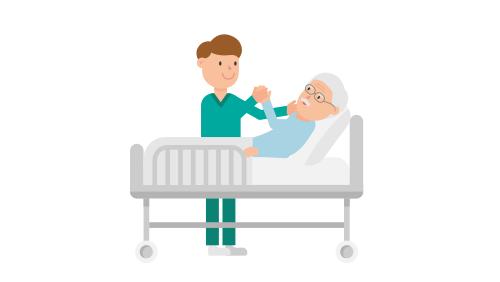"Timely patient discharge requires a coordinated effort among surgeons, nurses, case managers, physical therapists, and others. They must identify candidates for discharge early and the barriers that prevent the patient’s transition out of the hospital.”
In this instance, care coordination involves how to synchronize communication, or how do we get everyone on the same page. This problem is exacerbated by the varying schedules of all the actors - rarely are they all together, and in some instances, it is unclear who acts as the team leader. Why speak directly with one another, or text or call when we can use the newest shiniest toy in our administrative toolbox, artificial intelligence?
The study looked at the discharges of surgical patients in a large teaching hospital. The data used by the AI engine came from the electronic medical record and was “harvested” just before midnight to fully capture the information recorded that day. The data was both structured, e.g., numbers or predetermined phrases in orders, e.g., "advance to regular diet;" and unstructured, the natural language found in physician, nurse, and staff notes. The program looked for key phrases within the notes e.g., “ready for discharge.” The model provided to the AI engine was based upon discussion with the discharge team [1], who identified milestones in recovery and barriers to discharge. The model, trained on roughly 15,000 patients, made 75,000 daily predictions. With the training wheels off, it was tested on a set of 3300 patient records, followed by an observational study on an additional 605 real patients.
- It was a far better predictor of not being discharged 85.2% than of being discharged 51.7% (the phrase coin toss comes to mind)
- For that 27.8 % that it erroneously predicted would go home, half would go home the next day, with the remaining patients going home one or more days later.
Taken alone, these are rather dismal results. To burnish the results, they chose as a comparison, a prediction model based on the median length of stay for patients undergoing specific operations. This aggregate measure doesn’t take into account any patient or care variables, it is a low bar, but a bar they bested.
"We found that the model demonstrated strong discrimination, … and strictly dominated a comparison model that used historical median LOS by surgical procedure type to predict discharges.”
More interestingly, in 30% of cases, the prediction of discharge was incorrect because of clinical barriers, the patient was not clinically ready, and the algorithm failed to detect that amongst the structured and unstructured data. Approximately 35% remained in hospital because of uncoordinated communication between the discharge team members; 10% stayed at the request of family or the patient [2].
In the discussion the researchers identified the algorithms real value, it could help identify those patients who might be ready for discharge within 24 hours and focus discharge activities. But the truth of the matter is that a well-managed daily discharge meeting can accomplish the same thing. I know that it isn’t sexy, no app, no interface with the record, no shiny AI. But it does work, and it has an added advantage, it gets those members of the discharge team out of their silos, gets them talking to one another and anticipating the needs of the patient.
Safe, expeditious discharges result when discharge planning begins before hospitalization.
[1] Typically this includes the attending physician, a nurse caring for the patient, physical and occupational therapists, pharmacists, and a dedicated discharge planner.
[2] This can be due to scheduling problems on the part of the family who has to work and cannot get to the hospital until late in the evening.
Source: Development and Validation of a Machine Learning Model to Aid Discharge Processes for Inpatient Surgical Care JAMA Network Open DOI:10.1001/jamanetworkopen.2019.17221




